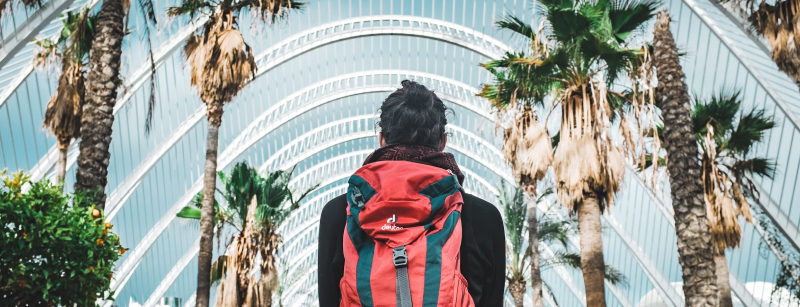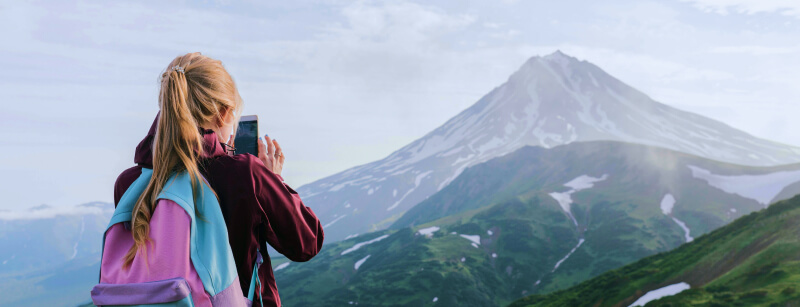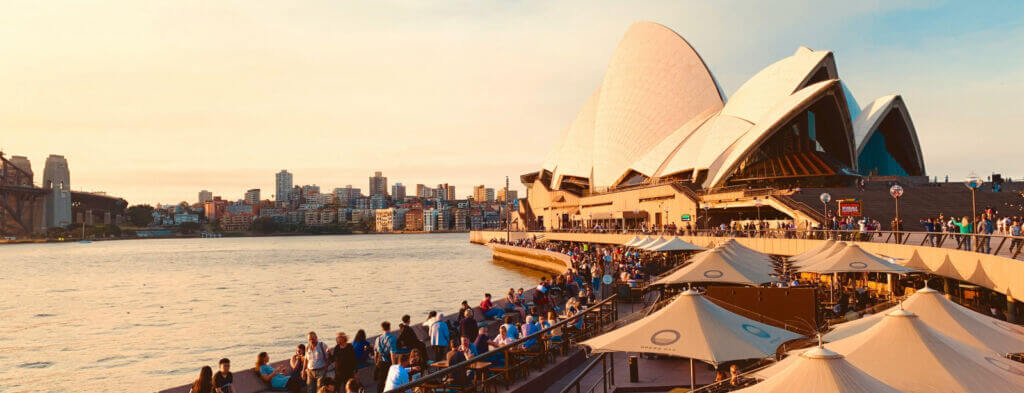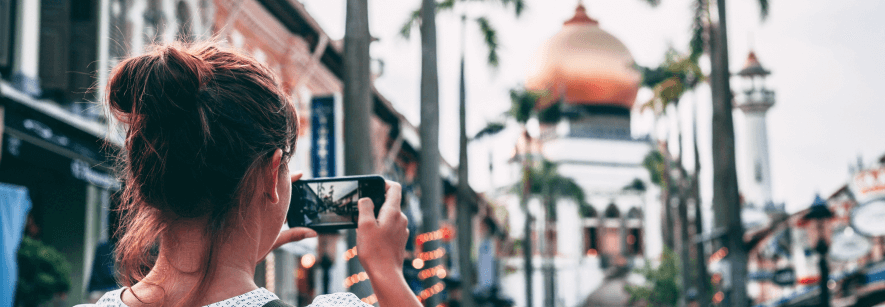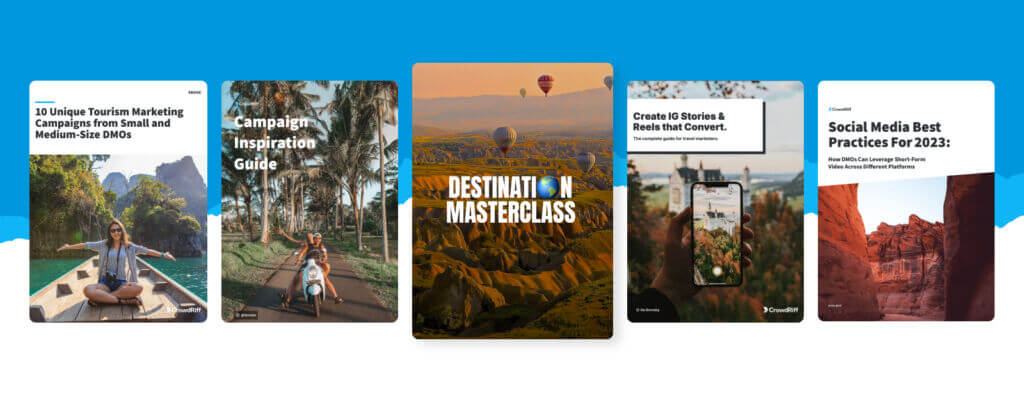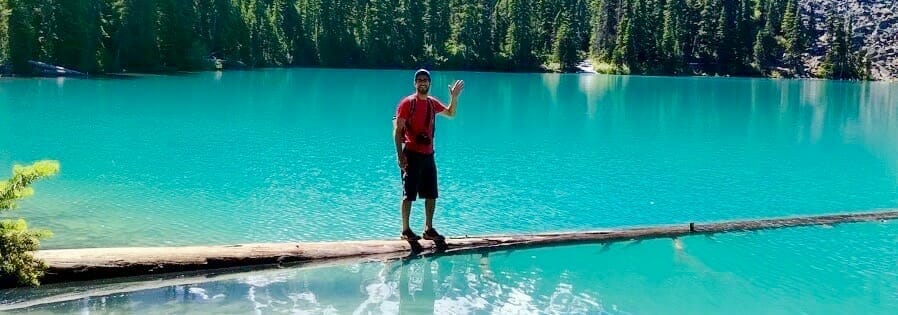
Images and videos offer brands a chance to share the most beautiful perspectives and attractions of their location or destination, while also giving casual observers on social media the chance to “travel” to them, and learn more about them right from their smartphone or laptop.
But how much do visuals really matter, exactly?
The stats speak for themselves. Content with accompanying imagery actually nets 94% more views than content without.
Impressive right? Well, we can go even deeper:
Most casual readers will read a whopping 62 words on a page (that’s about 15 seconds), and skim an article for roughly 2.5 seconds before deciding to read on or move on. However, those same readers will view every image on the page for over 15 seconds total, and are 65% more likely to retain the information in the content 3 days later if images are included.

Visuals are the absolute best, fastest way to tell the story of your brand, and share a bit of your vibe with even the most casual of viewers.
That’s why having a clear visual strategy is so critical. It cultivates your brand’s personality and culture across all platforms, and shares insights into what it’s like to visit your destination — on every platform from Facebook, to your blog, your ads, and beyond. That’s essential to brand recognition, and building a community of loyal customers and audience members who are chomping at the bit to buy from you, and experience all the perks of what you’re offering.
But now that the secret’s out, and everyone’s boarding the content train, how can you make yourself stand out in a creative way?
The answer is this: by developing a persona and the story you want to tell with your visual strategy.
Let’s talk a little bit about how that works.
Step 1: Stop thinking about visuals as accompaniments to your story (like a blog post, or any form of written content), and instead see them as a story that can stand independently
With Instagram, Tumblr, and other popular platforms created to cater to social image sharing, photos are no longer only bonus components in headers and galleries. They are stories in themselves. That’s why the way you choose to cultivate your presence on those platforms is of massive importance to the your company’s desired culture and community, and must be crafted with intention.
The most important thing to remember when you’re stepping up your visual strategy is to focus on your strengths as a brand, and the concepts that will relate best to what you’re offering. If you’re promoting a ski resort, photos of ice cream and cotton candy probably won’t do as well as they would for, say, Coney Island.
To begin, revisit your brand’s core philosophy. What experience are you looking to create with your branding efforts? Are you looking to inspire people to explore the wilderness, or experience the beauty of nature? Are you inviting them to spend time in a best-kept-secret city that’s brimming with life and art and attractions, but hasn’t quite hit the “mega popular travel destination” metrics yet? Are you showing off your location as a destination for all seasons?
Consider — how can you build stories off of those core ideas? What can you show? Start there.
Step 2: Start developing your visual story
Now you’re clear on the values you want to share, and the perspectives you want viewers to dive into with your visuals, your next step is to create a storyboard. (Yep, exactly like directors do before they begin shooting a movie.)
Just like a film director, this storyboard should include the key moments you want visitors (in-person, and online) to experience.
For example, let’s say your destination is known for its culture but you want to draw more attention to its natural surroundings, to attract new kinds of visitors. Your story would begin with a photo essay in the travel section of a national newspaper, then move on to your website, where readers would learn more. Then you’d want your visitor to click through to accommodation and activity operators, so they could make plans to visit your destination.
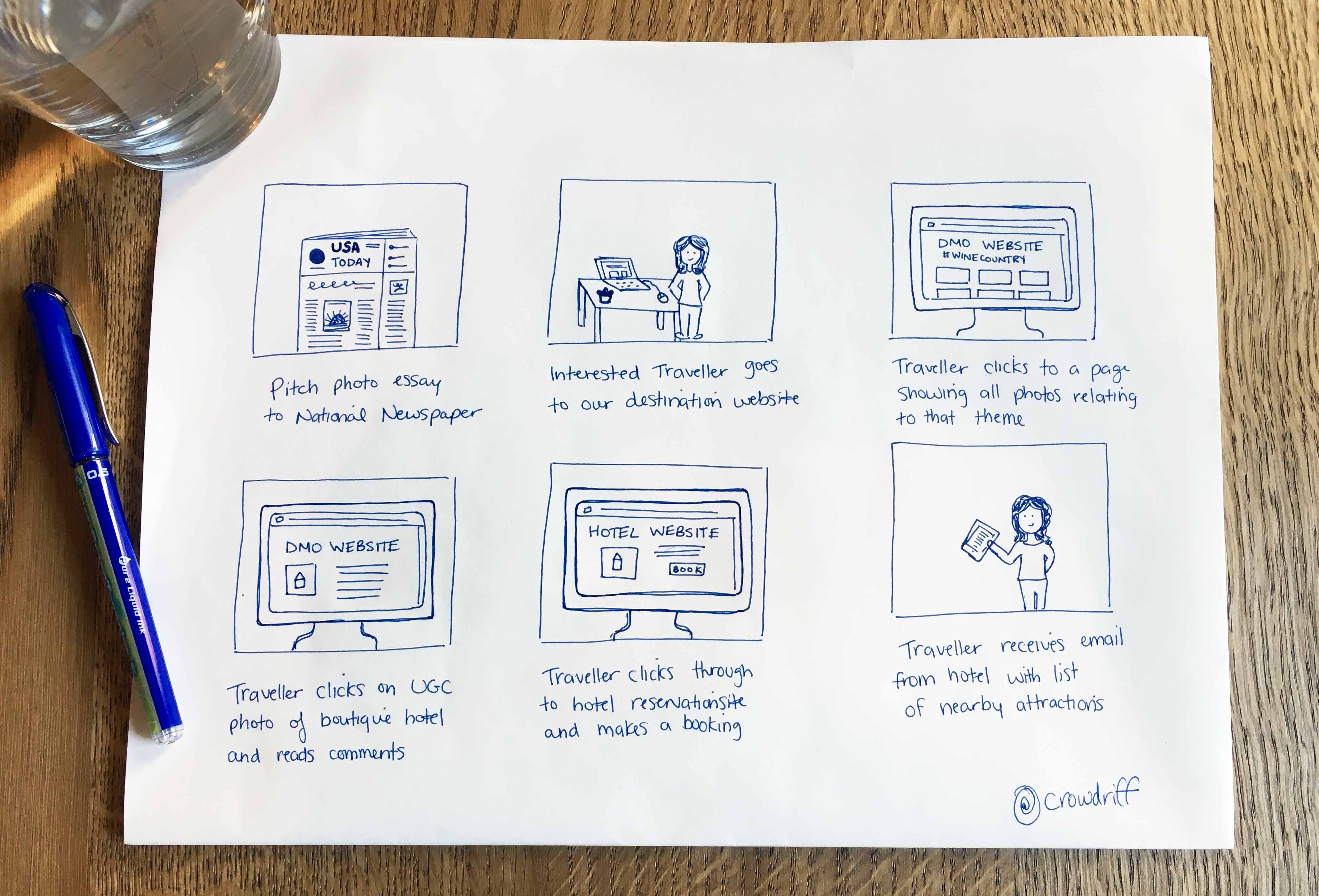
After you’ve developed your storyboard, you can move on to designing the the visual story.
One of the central elements of any visual story is color. Choosing a color scheme for your brand’s visual feed, as it will give you a uniform, recognizable aesthetic, and help people connect better to your story as a whole. While “color psychology” itself is a bit of a pseudoscience, choosing colors your visitors and viewers will respond to, connect with, and feel aligns with your brand is essential.
After you’re clear on your colors, decide: what kind of images will support that story? Is there a particularly beautiful sunset view in a certain spot? Is there a famous bread here tourists love to pick up unforgettable sandwiches? Is there a whimsical merry-go-round couples and kids alike love to take shots of themselves on? Include that in your storyboard.
You can also include photos that are not explicitly from your destination, but support your brand’s theme and persona. Consider tone and personality here – what will your viewers respond to, and associate with your brand? Photos of sunglasses and a towel for resorts are one classic example. You can also use quotes that tie into the theme of your company.
Just remember to stick to your core values. If you’re reaching for a more “rugged” feel at your ski resort, maybe forget about shots of the spring butterflies (or if you choose to include them, include an amusing note about how butterflies are rugged too.) Alternately, if you’re going for family-friendly, avoid posting pictures of excessive alcohol use or smoking.
Step 3: Decide on your voice
Yes, you’re telling a story with images – but you’ll also need to write, too. Your captions, comment responses, etc. should all have the same voice and personality that aligns with your brand.
‘Twas the night before the #puntrace16 #tothereandback #fogoisland @NLtweets pic.twitter.com/8yyDizUkQR
— Fogo Island Inn (@fogoislandinn)
Consider “who” you want your visual presence to be, based on how you want your consumers to feel. Do you want them to get the sense they’re part of an elite “club”? You’ll want to use high-end language, and a sophisticated tone. Or are you more of a rag-tag adventurers destination? That might be a bit more familiar and funny, i.e. “Hey, thanks so much! Glad ya dig it – we do too.”
Step 4: Go find your visuals
So many images, so little time. So where do you begin to find the perfect pictures for your visual strategy?
We recommend starting with your own library of images. If you have a ton of professional photos and product photos already taken, go through your albums and select the images that will align with your visual strategy, and the story you want to tell. It’s the perfect jumping off point, and will also allow you to get your strategy underway while cultivating more user generated and social images to use on your feeds.
Social media feeds in your niche are another great place to check out for content. Check out destinations similar to, or near yours, and consider if there’s any content of theirs you wish to share. For example, if you’re representing a boardwalk with world famous salt water taffy, stop by that taffy shop’s Instagram feed and ask to repurpose their photos on your blog. Once you have permission, publish that (with credit.)
Click to learn about UGC rights management
Checking hashtags relevant to your destination is also a great way to find UGC. So take some time to review the hashtags for your industry (for example, #beachlife or #Colorado), and when you see something you like, leave a comment explaining who you are, and asking for the poster’s permission to use it. If/when you get the OK, share it on your feed with credit to the user. This doesn’t just increase the number of quality images on your feed — it also helps you foster a sense of community.
Step 5: Decide how you want to share your story
Where will you be using images most often? On your website? Ads? Gallery? Will you be holding contests on social media, and building an audience on Instagram, Twitter, and Facebook? Will you be sharing about local businesses, partner organizations, etc.?
Before you kick off your strategy, be sure to sit down and get absolute clarity around that. The clearer you are, the better your results will be.
And finally, don’t forget to enjoy the process.
Creating your brand’s visual story is a creative adventure for you, and your entire team. It’s your opportunity to share what you’re all about on the emotional, visual, and energetic level — not to mention image shares are some of the most powerful viral content out there.
And if you’re looking for inspiration on what kind of visual stories to tell, we’ve got a blog post all about that. So don’t be afraid to try new things, encourage engagement, and spread beautiful insights about your destination. We promise: The world will be glad you did.
We’re here to help you bring your visual story to life. Get in touch or request a demo to learn more about how you can command the attention of locals and visitors, establishing yourself as a visual authority of your destination or brand.

